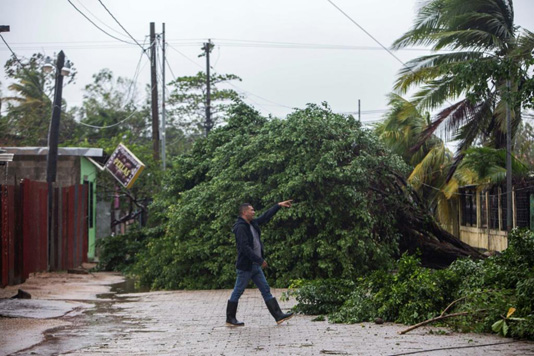TEGUCIGALPA, Nov 5, 2020 (BSS/AFP) – Tropical Storm Eta pushed into
Honduras on Wednesday after leaving behind a trail of destruction in
Nicaragua, where it made landfall the day before as a Category Four
hurricane.
At least four people — two in Nicaragua and two in Honduras — were
killed as Eta dumped heavy rain that unleashed widespread flooding and
landslides, officials said.
The US National Hurricane Center said Wednesday that Eta had weakened to a
tropical depression, but continued to warn of “life-threatening flash
flooding” over portions of Central America.
Honduras’ emergency response commission COPECO said 3,000 people had been
evacuated from their homes in the path of the storm.
Landslides swept away roads and at least five bridges, and the highway
linking the capital Tegucigalpa with second city San Pedro Sula was cut off
by a mudslide, it said.
COPECO warned people living near river banks to evacuate.
Honduran President Juan Orlando Hernandez called for solidarity to
overcome the challenges caused by the destruction.
Authorities evacuated around 700 prisoners in the city of El Progreso,
north of the capital, after the site was swamped by rain.
In neighboring La Lima, hundreds of families fled their homes and took
refuge in makeshift plastic and sheet metal shelters erected along a highway
median.
– ‘Villages washed away’ –
Eta slammed ashore at the northern Nicaraguan coastal town of Bilwi — also
known as Puerto Cabezas — on Tuesday packing winds of 130 miles per hour
(210 kilometers per hour) winds that knocked over walls, uprooted trees and
tore roofs off dwellings.
It left impoverished indigenous communities along Nicaragua’s northern
coast underwater, and swept away several coastal villages.
“The information we have is that the community of Wawa no longer exists,
the sea has completely entered the community,” local emergency volunteer
Kevin Gonzalez told AFP.
He said the hurricane also severely damaged the coastal communities of
Karata and Haulover.
Bilwi, the biggest city on the northern coast, “has been badly affected,
there are surrounding neighborhoods and bridges that are flooded, many houses
are without roofs,” said Gonzalez.
The hurricane is likely to have a devastating effect on the communities’
main livelihoods of fishing and agriculture, said the World Food Programme
(WFP), which has sent 80 tons of food aid to the region.
The storm is forecast to continue moving inland over central Honduras on
Thursday.
As the surface layer of oceans warms due to climate change, hurricanes are
becoming more powerful and carrying more water, posing an increasing threat
to the world’s coastal communities, scientists say.
Storm surges amplified by rising seas can be especially devastating.
Guatemala issued a flood warning in the regions bordering Honduras.
President Alejandro Giammattei said in a televised address that at least
two major rivers were in danger of overflowing their banks.
In El Salvador, President Nayib Bukele said that more than 100,000 people
from relief organizations, the police and army were ready to help during and
after the storm.



